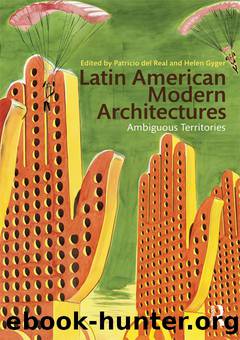Latin American Modern Architectures by del Real Patricio;Gyger Helen; & Helen Gyger

Author:del Real, Patricio;Gyger, Helen; & Helen Gyger [Patricio del Real]
Language: eng
Format: epub
ISBN: 1209532
Publisher: Taylor & Francis Group
1972 deadline impossible to meet. Allende turned to the Urban Development Corporation (CORMU), the state agency that was to manage the project, and asked for an alternative assessment. The head executives of CORMU, the architects Miguel Lawner and Jorge Wong, assured Allende that a new building would be possible in less time. CORMU counted on its legal powers, on the dynamic coordination of diverse public agencies, on assistance from the recently nationalized industries, and on the commitment among Allendeâs supporters to have the building delivered on time. Allende ordered all government institutions to fast-track the legal procedures, and named a special assessor to negotiate the budget approval with the congress.3 A project advisory committee was created, and architects José Covacevich, Juan Echeñique, Hugo Gaggero, Sergio González, and José Medina were selected to lead the design, with Lawner as coordinator of the overall project on behalf of CORMU. The architects had not worked together in the past, and not all were âmilitantsâ of the presidentâs national project, yet they demonstrated a profound commitment to the task Allende had given them. There was an architectural problem to solve, and it was to be answered with assertive solutions. The new building was designed, built, and inaugurated in 275 days.
The building had to fulfill the needs of the UNCTAD conference and accommodate its subsequent conversion into a cultural center. An appropriate site had to be chosen, and the final decision was a 656 by 1640 ft. lot in the northern portion of the ongoing San Borja urban renewal project, which comprised several city blocks that were being renovated with twelve new residential towers. The site was in the first blocks of the Alamedaâthe main avenue in Santiagoâin the vicinity of the Parque Forestal, Museum of Fine Arts, National Library, Municipal Theatre, and one of Santiagoâs main universities.4 Since the zone was currently undergoing renovation, the insertion of a new building into the urban grid would be a less complicated affair; moreover, a station for the new subway system had already been planned next to the site. Finally, the chosen site belonged almost entirely to CORMU, and immediately behind it one of the new residential towers was already being built, and could be transformed into an office tower with no major structural alterations. This left the low-rise building as the primary design and construction challenge.
6.02 Aerial view of the UNCTAD building construction site, with the Secretariat tower, and four of the San Borja refurbishment towers on the other side of Alameda Avenue, Santiago, 1971
Download
This site does not store any files on its server. We only index and link to content provided by other sites. Please contact the content providers to delete copyright contents if any and email us, we'll remove relevant links or contents immediately.
| Belize | Costa Rica |
| El Salvador | Guatemala |
| Honduras | Nicaragua |
| Panama |
Cat's cradle by Kurt Vonnegut(13889)
Pimp by Iceberg Slim(12940)
Underground: A Human History of the Worlds Beneath Our Feet by Will Hunt(11264)
4 3 2 1: A Novel by Paul Auster(11072)
The Radium Girls by Kate Moore(10914)
American History Stories, Volume III (Yesterday's Classics) by Pratt Mara L(4828)
Perfect Rhythm by Jae(4628)
Wiseguy by Nicholas Pileggi(4598)
The Fire Next Time by James Baldwin(4349)
Paper Towns by Green John(4175)
A Higher Loyalty: Truth, Lies, and Leadership by James Comey(4038)
Pale Blue Dot by Carl Sagan(4015)
The Mayflower and the Pilgrims' New World by Nathaniel Philbrick(3917)
The Doomsday Machine by Daniel Ellsberg(3736)
Too Much and Not the Mood by Durga Chew-Bose(3698)
Killers of the Flower Moon: The Osage Murders and the Birth of the FBI by David Grann(3621)
The Borden Murders by Sarah Miller(3592)
The Sympathizer by Viet Thanh Nguyen(3508)
Killing England by Bill O'Reilly(3459)
